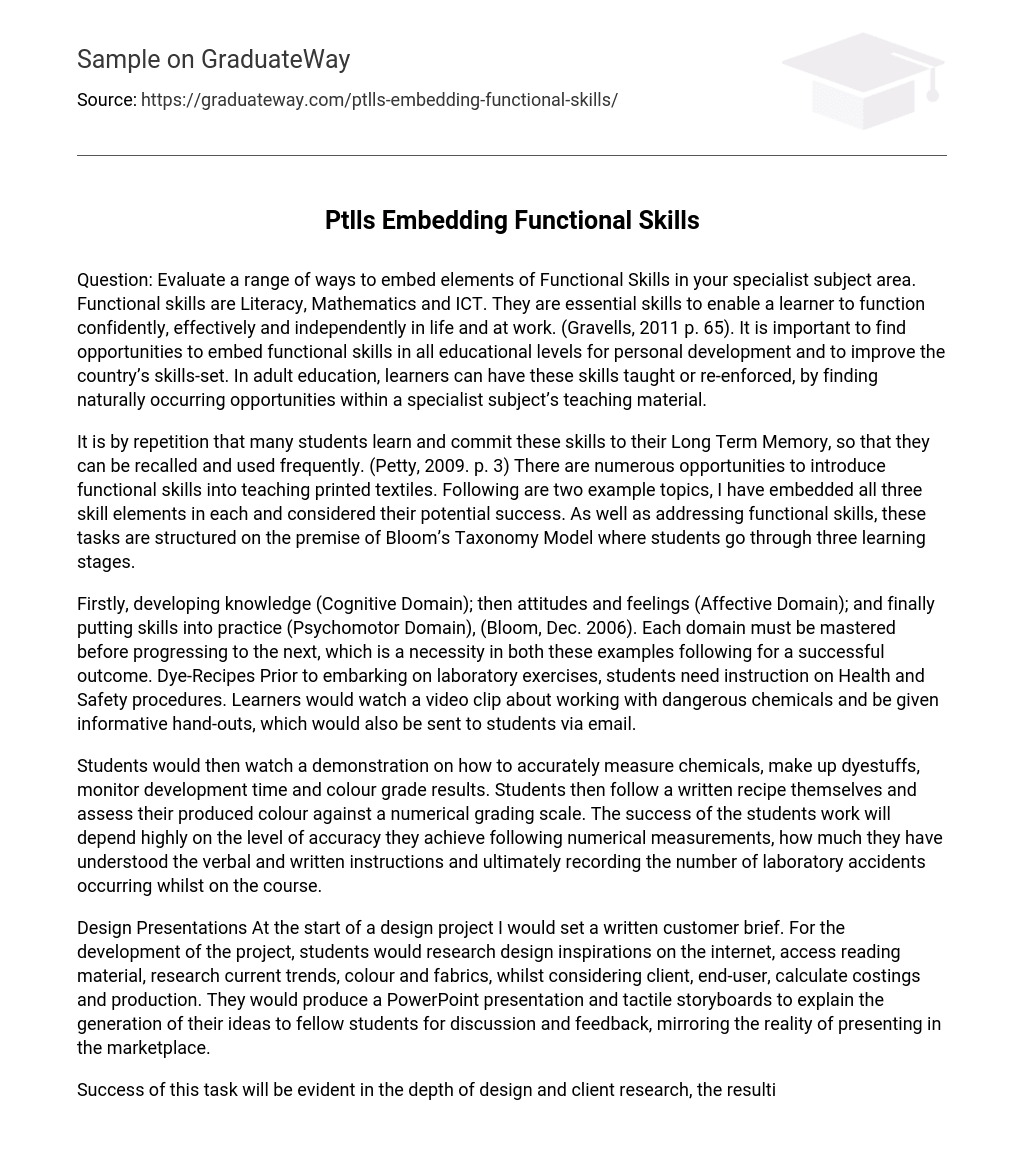Question: Evaluate a range of ways to embed elements of Functional Skills in your specialist subject area. Functional skills are Literacy, Mathematics and ICT. They are essential skills to enable a learner to function confidently, effectively and independently in life and at work. (Gravells, 2011 p. 65). It is important to find opportunities to embed functional skills in all educational levels for personal development and to improve the country’s skills-set. In adult education, learners can have these skills taught or re-enforced, by finding naturally occurring opportunities within a specialist subject’s teaching material.
It is by repetition that many students learn and commit these skills to their Long Term Memory, so that they can be recalled and used frequently. (Petty, 2009. p. 3) There are numerous opportunities to introduce functional skills into teaching printed textiles. Following are two example topics, I have embedded all three skill elements in each and considered their potential success. As well as addressing functional skills, these tasks are structured on the premise of Bloom’s Taxonomy Model where students go through three learning stages.
Firstly, developing knowledge (Cognitive Domain); then attitudes and feelings (Affective Domain); and finally putting skills into practice (Psychomotor Domain), (Bloom, Dec. 2006). Each domain must be mastered before progressing to the next, which is a necessity in both these examples following for a successful outcome. Dye-Recipes Prior to embarking on laboratory exercises, students need instruction on Health and Safety procedures. Learners would watch a video clip about working with dangerous chemicals and be given informative hand-outs, which would also be sent to students via email.
Students would then watch a demonstration on how to accurately measure chemicals, make up dyestuffs, monitor development time and colour grade results. Students then follow a written recipe themselves and assess their produced colour against a numerical grading scale. The success of the students work will depend highly on the level of accuracy they achieve following numerical measurements, how much they have understood the verbal and written instructions and ultimately recording the number of laboratory accidents occurring whilst on the course.
Design Presentations At the start of a design project I would set a written customer brief. For the development of the project, students would research design inspirations on the internet, access reading material, research current trends, colour and fabrics, whilst considering client, end-user, calculate costings and production. They would produce a PowerPoint presentation and tactile storyboards to explain the generation of their ideas to fellow students for discussion and feedback, mirroring the reality of presenting in the marketplace.
Success of this task will be evident in the depth of design and client research, the resulting final designs, effective communication skills, and the suitability of their proposed product in terms of cost and use. Word count: 438 References: Gravells, A. ‘Preparing to Teach in the Lifelong Learning Sector’. 4th ed. Learning Matters Ltd, 2011. Petty, G. ‘Teaching Today. A Practical Guide’. 4th ed. Nelson Thornes Ltd, U. K. 2009. Chapman, A. Bloom’s Taxonomy of Learning Domains, December 2006 http://www. businessballs. com/bloomstaxonomyoflearningdomains. htm [accessed 3 October 2011]





